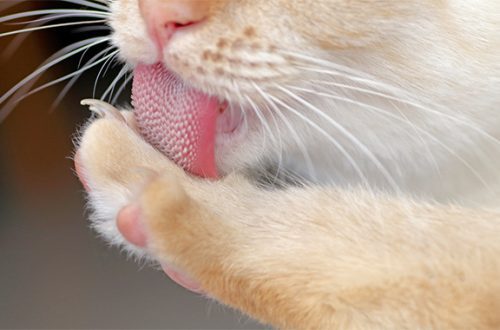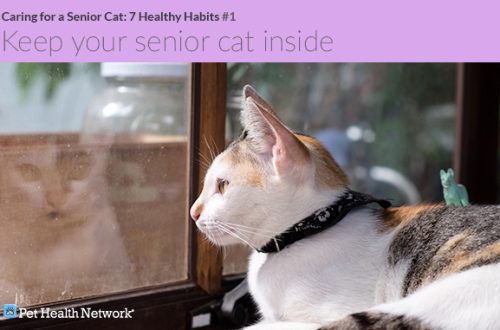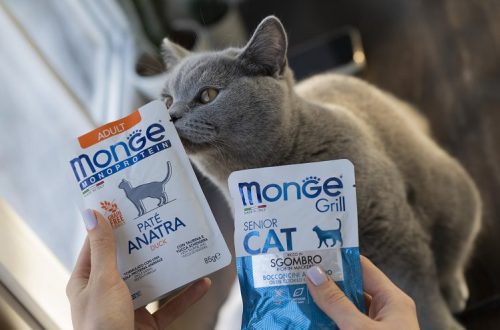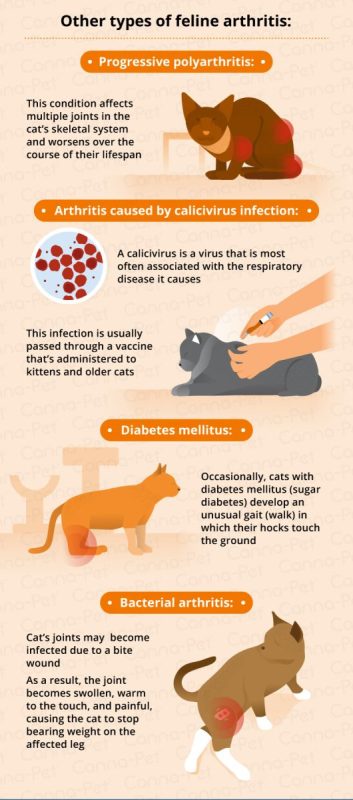
Joint diseases in cats, their symptoms and treatment
Cheerful fuss, impressive jump, lazy stretching – all these movements are extremely important for the daily life of a cat. And the key to her ability to stretch, flap and jump is her joint health.
Joint problems in a cat can occur if she is elderly, overweight, or suffers from diseases that limit her mobility. How to identify diseased joints in a cat and what do you need to know about this pathology?
Contents
Causes of Decreased Mobility in Cats
The two most common causes of joint disease in cats are deterioration and obesity. Obesity can accelerate joint aging and disrupt the condition. However, even at the age of 6 months, joints in a cat of any size can hurt.
The most common cause of joint deterioration is degenerative joint disease (DJD). In everyday life, it is usually called osteoarthritis.
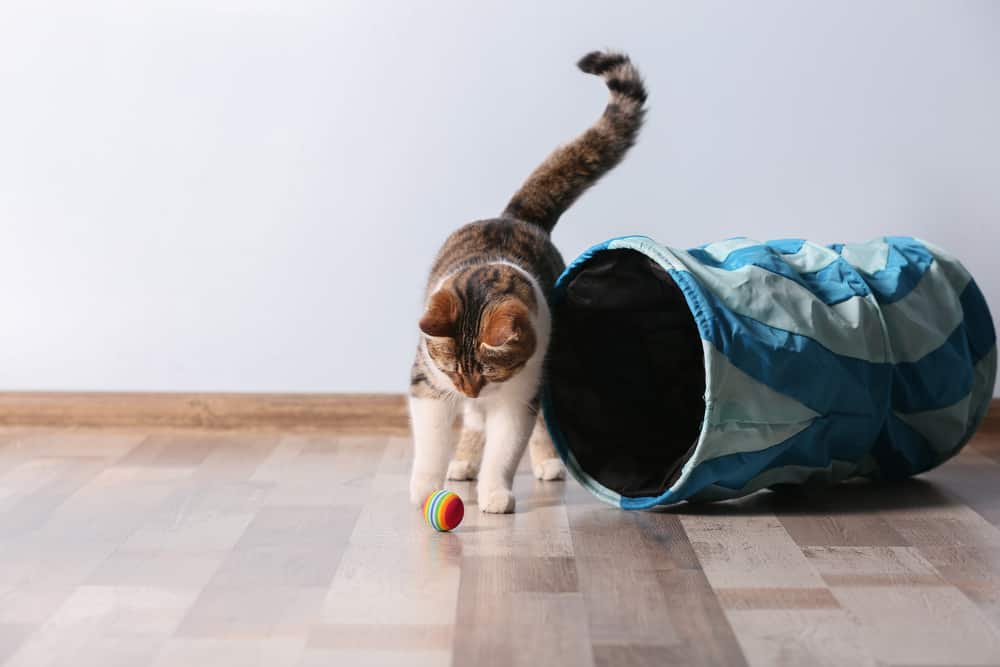 DSD develops when a cat’s articular cartilage weakens and eventually begins to break down. The lack of cartilage causes the bones to rub against the joints, causing inflammation and pain, especially when moving.
DSD develops when a cat’s articular cartilage weakens and eventually begins to break down. The lack of cartilage causes the bones to rub against the joints, causing inflammation and pain, especially when moving.
The following conditions can contribute to the onset of degenerative joint disease and reduced mobility:
- feline hip dysplasia;
- disease of the cruciate ligaments;
- intervertebral disc disease;
- infection;
- trauma, including removal of claws;
- cancer;
- diabetes;
- autoimmune diseases.
Signs of Decreased Mobility in Cats or Symptoms of Joint Inflammation in Cats
Cat owners should carefully monitor the behavior of their pets. Usually, the signs of weakening of the joints are subtle, so owners may mistake such behavioral changes for normal or age-related changes.
When evaluating the mobility of a cat and the general condition of the joints, it is necessary to pay attention to the following signs:
- the cat jumps less or cannot jump on high surfaces;
- the cat walks less and spends more time at rest;
- hunched posture when walking;
- loss of muscle mass, especially in the hind limbs and in the spine;
- desire to hide
- untidy appearance of wool;
- weight gain;
- constipation;
- sensitivity when scratching or stroking, especially in the lumbar region.
If your cat exhibits this behavior, you should definitely make an appointment with your veterinarian. All of these signs point to deteriorating joint health and could mean your cat is in pain.
How to keep your cat mobile
There is a lot that cat owners can do to keep their pets healthy and mobile and prevent future joint pain.
To do this, it is necessary to ensure that the cat has a normal weight from an early age, to help her lead an active lifestyle and provide regular veterinary care.
Cat food is also important for joint health. It is necessary to control portions and select the right diet to prevent obesity. You should always seek the help of a veterinarian when choosing cat food and nutritional supplements. It is necessary that, in addition to food, the cat does not receive additional pieces from the owner’s table, because this can contribute to the rapid gain of extra pounds.
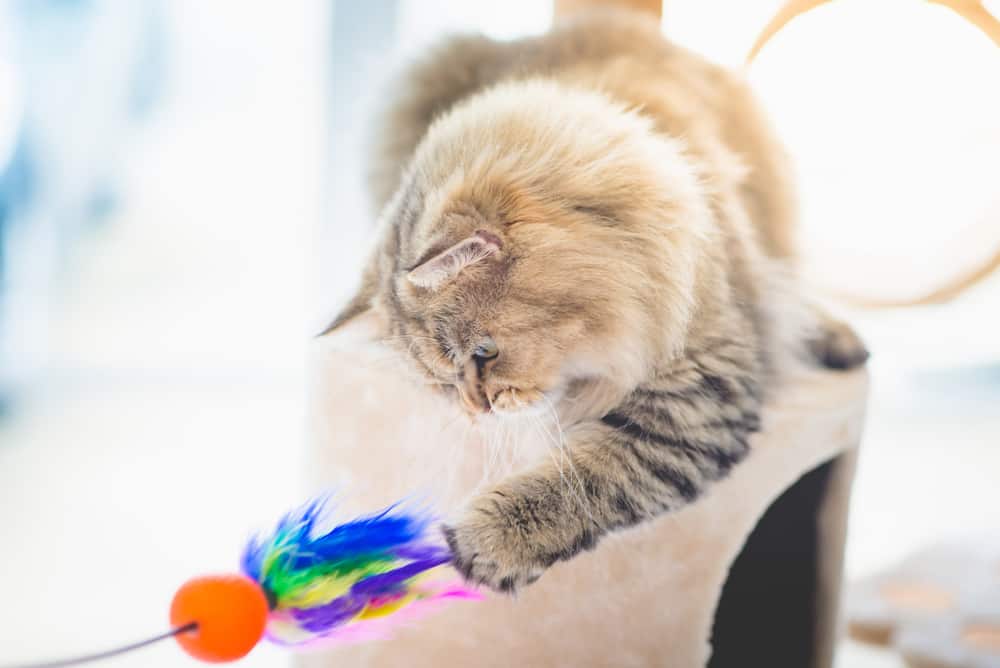
The Role of Exercise in Cat Mobility
The mobility and general condition of the joints are highly dependent on the level of activity of the animal. Regular exercise is important for preventing osteoarthritis in a cat, as stronger bones with well-developed joints provide increased flexibility and protection from injury. And microtrauma resulting from regular wear and tear can cause osteoarthritis.
These tips can help your cat stay active and interested in their environment:
- Arrange multiple gaming sessions throughout the day. The presence of other cats in the house provides additional opportunities for play activity.
- Encourage your pet to be active. Make it so that in everyday life the cat has to put in more physical effort, for example, put up shelving and cat trees. This will not only encourage her to jump more, but also expand her territory, which is always beneficial.
According to the American Association of Cat Practitioners, feeding several small meals a day instead of two large meals improves cats’ mobility and stimulates their interest in their surroundings.
The use of food puzzles and games in which the cat has to “get its own food” also promotes physical activity. This approach is very different from free feeding, where the cat always has food in the bowl, and consists in giving the pet several small scheduled meals on the recommendation of a veterinarian.
Joint Disease in Cats: Treatment
Veterinary care is critical for cats with joint and mobility problems. First, a veterinarian should conduct a complete examination of the pet. He will order x-rays and blood tests. Based on the results of research, he may recommend one or more of the following treatments:
- NSAIDs – non-steroidal anti-inflammatory drugs and other painkillers: can safely relieve pain and relieve swelling in the joints.
- Massage and exercise.
- Medicated cat food: The doctor will pick it up. These foods are specifically formulated to support joint health, so your cat’s mobility can be improved by simply switching from her regular food to one of these therapeutic options.
- Nutritional supplements: They may be useful in the treatment and prevention of degenerative joint diseases.
Regardless of the age or size of the cat, the stimulation of physical activity in any case will benefit her, then the cat will not need to treat the joints. It is imperative to consult with a veterinarian if the cat has become less moving or does it differently than usual. The task of any responsible owner is to keep his pet in motion!
See also:
Veterinary passport for a cat
What to do if a cat is obese?
Is your cat gaining weight?
Do cats need extra vitamins?



